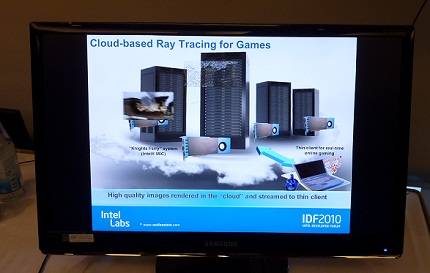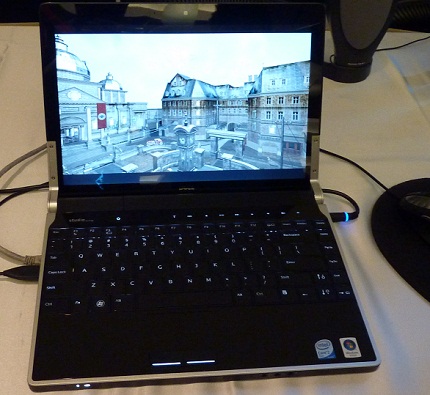Cloud-based ray tracing for games
A couple of years ago Intel disclosed that it was moving into the graphics space with the Larrabee architecture. The announcement trigged some fervent discussion in the enthusiast community, but Intel's efforts came to nought as the project was shelved as a consumer product.Intel has since breathed new life into the Larrabee debacle by harvesting some of technology for a new kind of chip designed around a Many Integrated Core architecture. Intel's research team used early samples of the MIC, known as Knights Ferry, to showcase cloud-based ray tracing for games.

The demonstration brings together four, 32-core MIC boards that do the heavy lifting involved in ray tracing. The resulting output is transferred to a regular laptop over a gigabit link, which provides enough bandwidth for the two-way communication required when streaming data from cloud-based source while also providing frame-by-frame feedback.

A laptop's graphics are used solely to display the output. The demonstration we saw provided smooth frame-rates - averaging 45fps - when displaying Wolfenstein in physically-perfect ray traced form. While we admit that it did look rather good, the use of Intel's MICs as cloud-based game renderers is some way off becoming a reality: they don't support common graphics APIs such as DirectX or OpenGL, and games developers would need to modify their code to work with Intel's ray tracing algorithms. Then there's the whole question of latency, as well.
Peering into the future, perhaps Intel will do battle with NVIDIA after all, as the graphics company has its own real-time ray tracing setup based around Tesla GPUs.













